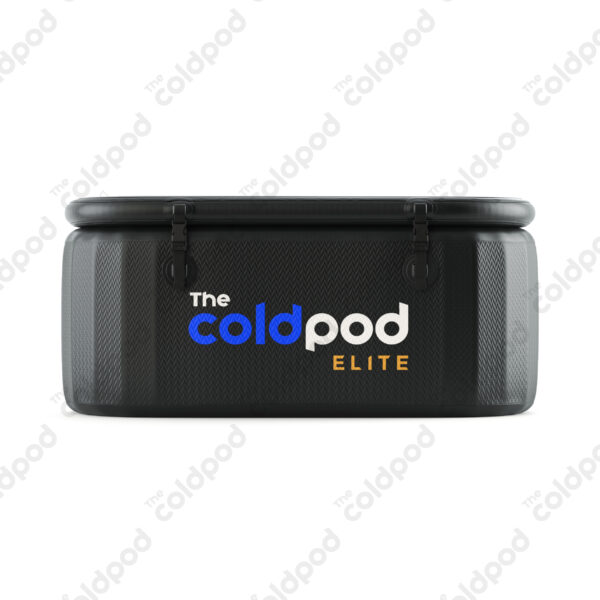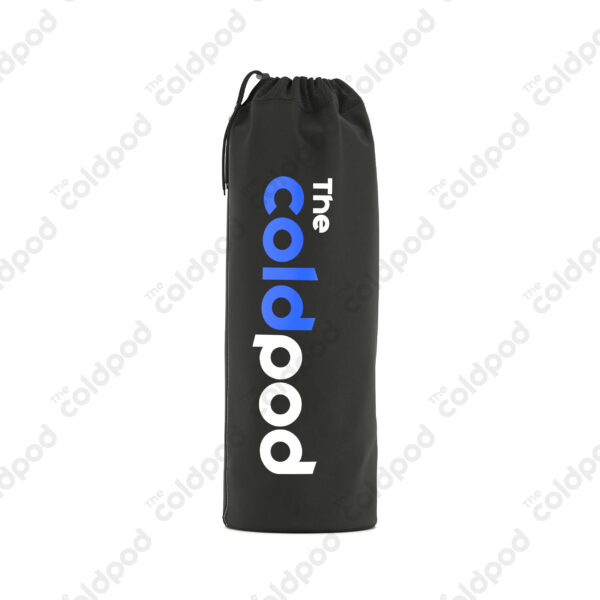
From Cold to Gold: Why Ice Baths Should Be a Regular Part of Athletes’ Regimens
Introduction
Sports can be an incredibly demanding activity, requiring athletes to push their bodies to their absolute limits. With this level of exertion comes soreness and inflammation, which can quickly sideline an athlete from competition. To combat this, many athletes are turning to cold-water immersion as a way to reduce inflammation, alleviate muscle soreness, and promote recovery. In this blog post, we’ll discuss the science behind why ice plunges should be a regular part of athletes’ regimens, providing evidence of their efficacy, optimal protocols for cold therapy, and practical tips for incorporating them into training routines.
Understanding the Benefits of Ice Bathing for Athletes
Athletes are no strangers to physical strain and muscle soreness. The concept behind ice bathing is simple: submerging your body in cold water (typically ranging from 50-59 degrees Fahrenheit) for 10-20 minutes to promote recovery. While this may sound unpleasant, the benefits are too significant to ignore.
Firstly, this practice can reduce inflammation in the muscles. Inflammation is the body’s natural response to physical activity and is caused by small tears in muscle fibres. By submerging in cold water, blood vessels constrict and flush out metabolic waste products, like lactic acid, that contribute to muscle inflammation and soreness.
In addition to reducing inflammation, taking cold dips also alleviates muscle soreness. The cold water numbs the nerve endings, providing a numbing effect to the muscles. This allows athletes to recover quicker and reduce the amount of pain and soreness they feel after a workout.
Ice baths are also proven to promote recovery by increasing circulation and blood flow. This allows nutrients and oxygen to be transported to the muscles, aiding in the healing process, and increasing overall recovery time.
While it’s important to note that ice bathing is not a “one-size-fits-all” solution and may not be the best choice for every athlete, they have proven to be an effective recovery tool for many.
How Ice Baths Reduce Inflammation and Alleviate Muscle Soreness
Athletes are no strangers to inflammation and muscle soreness however, ice bathing has been proven to help alleviate both symptoms by constricting blood vessels, reducing blood flow, and slowing down cellular activity. This reduces inflammation and decreases the buildup of lactic acid, which contributes to muscle soreness.
Cold-water dipping also promotes the release of endorphins, which are natural pain relievers, therefore providing much-needed relief to athletes. The decrease in inflammation and muscle soreness means that athletes can recover faster and get back to their training routine more quickly.
The benefits of cold baths are not just anecdotal but backed up by scientific evidence. Studies have shown that immersion in cold water can improve muscle soreness and performance, as well as reduce inflammation.
The Scientific Evidence Behind Ice Bath Therapy
“Cold water immersion recovery after simulated collision sport exercise” (Wilcock et al., 2006)
This study showed that immersion in cold water had some beneficial healing effects. The participants in the cold-water immersion group experienced much less muscle pain at 24, 48, and 72 hours than those in the passive recovery group.
Effects of cold-water immersion and active recovery on post-exercise heart rate variability and heart rate recovery” (Bastos et al., 2017)
According to this study, cold water immersion improved trained cyclists\’ post-exercise heart rate variability and heart rate recovery.
“The effect of cold water immersion on the recovery of physical performance revisited” (Hui Cheng Choo, et al., 2023)
The results of this study found that cold water immersion can benefit the acute recovery of endurance performance and the longer-term recovery of muscle strength and power.
“Recovery From Exercise-Induced Muscle Damage: Cold-Water Immersion” (Abd-Elbasset Abaïdia, et al., 2016)
This study indicates that cold-water immersion can effectively alleviate soreness and discomfort experienced after intense physical activity.
Optimal Protocols
When it comes to ice therapy, it’s important to establish some guidelines to ensure you’re getting the most out of your cold soak. Here are some optimal protocols for athletes to follow:
- Timing is Key: The ideal time to take an ice bath is within 30 minutes of completing your workout or competition. This will help to reduce inflammation and promote recovery.
- Keep it Cold: The temperature of the water should be between 10-15°C. If you don\’t have access to a thermometer, just aim for a temperature that feels cold but tolerable.
- Get in and Stay Put: You should stay in the icy waters for 10-15 minutes. This may feel uncomfortable at first, but your body will gradually adapt to the cold.
- Warm-Up Afterwards: Once you’re out of the water, take a warm shower or bath to help bring your body temperature back up.
- Use The Cold Pod: If you have access to a Cold Pod, use it to enhance your experience. The Cold Pod is a great portable ice bath that has insulation to maintain the water temperature.
By following these optimal protocols, you can maximise the benefits of your sessions and help your body recover faster and perform at its best.
Practical Tips for Incorporating Ice Baths into Athletes’ Training Routines
Now that you understand the benefits and protocols, let’s discuss practical tips for incorporating ice baths into your training routine.
- Schedule sessions strategically: It’s best to schedule your ice baths post-workout or after a competition. This will ensure that your muscles receive the full benefits of the therapy.
- Gradually decrease the temperature: It’s important to gradually decrease the temperature of the water, rather than jumping into a cold bath immediately. This will help your body adjust to the temperature change and prevent shock.
- Keep the session short: Aim for a maximum of 10 minutes in the water. Longer sessions may cause tissue damage and hinder your recovery.
- Use compression: Consider wearing compression garments during and after each session. This will help improve circulation and promote recovery.
- Hydrate: Ice baths can be dehydrating, so make sure to drink plenty of water before and after your session.
- Take advantage of contrast therapy: If you have access to both hot and cold therapy, try alternating between the two. This can improve circulation and promote recovery even further.
Remember to listen to your body and adjust your therapy accordingly. With consistent use, ice baths can help you reach new heights in your athletic performance.
Conclusion
Incorporating cold plunges into your training routine can be a game-changer for athletes. By reducing inflammation, alleviating muscle soreness, and promoting recovery, ice dips offer tangible benefits backed by scientific evidence. Optimal protocols, such as timing, temperature, and duration, ensure you make the most of each session. Additionally, practical tips like scheduling strategically, gradual temperature decrease, and using compression garments further enhance the effectiveness of this invigorating ritual. Embrace this powerful tool and witness the positive impact it can have on your athletic performance and overall well-being. Take the plunge and unlock your full potential with ice baths.
Like this article?
Explore More
Try Cold Exposure with Our Ice Baths
-
UK Estimated Delivery: 16th December - 18th December
The Cold Pod – Portable Ice Bath
£125.00Original price was: £125.00.£75.00Current price is: £75.00. -
UK Estimated Delivery: 16th December - 18th December
The Cold Pod XL – Portable Ice Bath
£175.00Original price was: £175.00.£120.00Current price is: £120.00. -
UK Estimated Delivery: 16th December - 18th December
The Cold Pod Elite Bath
£900.00Original price was: £900.00.£799.00Current price is: £799.00. -
UK Estimated Delivery: 16th December - 18th December
The Cold Pod Elite Barrel
£900.00Original price was: £900.00.£799.00Current price is: £799.00.
-
UK Estimated Delivery: 16th December - 18th December
-
UK Estimated Delivery: 16th December - 18th December
-
UK Estimated Delivery: 16th December - 18th December
Try cold exposure with our ice baths
-
UK Estimated Delivery: 16th December - 18th December
The Cold Pod – Portable Ice Bath
£125.00Original price was: £125.00.£75.00Current price is: £75.00. -
UK Estimated Delivery: 16th December - 18th December
The Cold Pod XL – Portable Ice Bath
£175.00Original price was: £175.00.£120.00Current price is: £120.00. -
UK Estimated Delivery: 16th December - 18th December
The Cold Pod Elite Bath
£900.00Original price was: £900.00.£799.00Current price is: £799.00. -
UK Estimated Delivery: 16th December - 18th December
The Cold Pod Elite Barrel
£900.00Original price was: £900.00.£799.00Current price is: £799.00.
Accessories
-
UK Estimated Delivery: 16th December - 18th December
-
UK Estimated Delivery: 16th December - 18th December
-
UK Estimated Delivery: 16th December - 18th December
-
UK Estimated Delivery: 16th December - 18th December


















